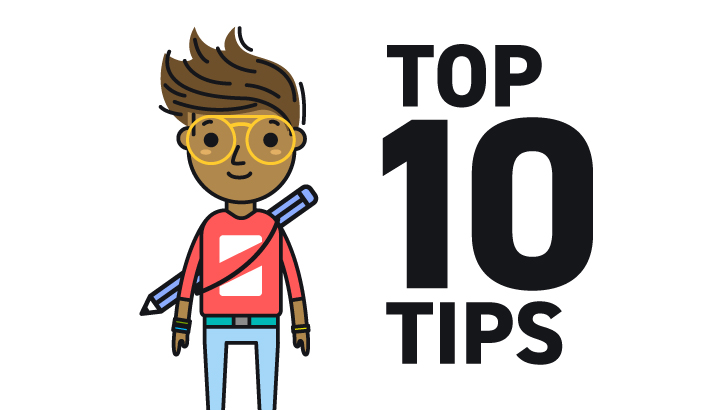In 2019, I celebrated my fifth year as a Freelance Writer. Artisan Talent was kind enough to ask me to write a guest post on how I built my business. (Thanks, AT!)
Last year, I made a full-time living writing for business clients on nights and weekends. This was in addition to my full-time day job.
Read this article to find out how I did it — and how you can, too. All you need is a little talent, a good spellchecker, and the internal grit to sell yourself and always meet client deadlines.
Art and Reinvention After Age 50
/Hiring_Image1b.jpg)
I’m 54 years old. Tack on three zeros and you’ll figure out what my Accountant filed on my taxes last year.
While my tax guy would tell me I’m an idiot to share my income figures with strangers, it feels right to share the numbers. It’s not bragging. I want you to see, realistically, what you can pull in as a Freelance Copywriter even when you have a day job. But it ain’t easy, folks.
Do you know how many 500 to 2,000-word articles you have to write to hit those numbers? I do, and I’ll share with you a bit later how you can tackle that particular mountain.
How did I get here? I was laid off a few years ago. I was in my early 50s. While these things never come at a good time, it was a shocking, sobering moment that could have knocked me out completely. Instead, I sent out dozens of resumes the day I was laid-off and took the first job offer with health insurance within 48-hours.
Ultimately, the whole experience of being kicked to the curb made me decide to never put my eggs in one basket again.
On Writing: Platforms

I never had the courage to be an entrepreneur until I was laid off. I was already writing on the side for a couple of online platforms. Suddenly those side gigs mattered. Writing in general was always very satisfying, but writing for a living made me feel like a rock star.
The side gigs to supplement my day job came strictly from writing platforms at first. To find the jobs, I just searched “online writing platforms that pay writers.” I found Freedom with Writing’s great list of 50 platforms, which was all I needed to get started.
Each platform was easy to navigate but required a writing test or sample, as well as a bio. I ended up working with four of them. You’ll also need a PayPal account, which is free for the basic service.
While your experience may be different, here was mine:
- WriterAccess
WriterAccess is one of the best platforms out there if you’re trying to build a portfolio. They’ve gotten more sophisticated since I used them, now incorporating machine learning algorithms into their platform to match Writers with gigs and hosting a content marketing conference each year. (Full disclosure: Artisan Talent has used this platform.) - Zerys
Zerys is another of the content marketplaces that match Copywriters with gigs. While they aren’t Fiverr, the platform where you can get a freelancer to do just about anything for $5, the pay here is strictly entry level. But that doesn’t mean it’s not a great place to get started as a freelancer. - Contently
I found Contently originally because I was looking for a free place to house my online portfolio, but my career there never took off. The pay is good, however. - Upwork
Upwork is probably the best place to break into the field. Like all of the writing platforms, you have to set up a free online account. Once approved for membership, you have access to a running feed of possible writing gigs to bid on. I picked up two very nice accounts from Upwork. One of them was writing for GoDaddy’s blog with a specialization in healthcare and IT. - Media Shower
I’ve been writing for Media Shower for about three years. My dashboard tells me I’ve written 682 articles with 3,031 conversions, for an average of 4.44 conversions per article. Each week I have a steady book of business from some excellent clients. The work is from diverse fields, like collections, addiction recovery, and oddly, an online pharmacy that sells medication for erectile dysfunction. It’s made me a very interesting conversationalist.
While I credit these online platforms for helping me start a portfolio, the work I've gotten through them has usually been one-offs. That makes it incredibly difficult to get into the vibe of each client’s brand. The exception was Media Shower, which is why I’ve stuck with them for so long. I ended up respectfully asking Media Shower for a raise at one point, and today I guess I’m one of their senior writers. As always, I am grateful for the work.
Over time, though, these one-off gigs led me to a few solid solo and agency clients. That’s when things really took off.
Discipline and The Art of Motorcycle Maintenance

Here’s the deal. If you want to add freelancing as a second job safety net, get ready to put in some long days. For the most part, I work seven days a week, 12 to 15 hours a day. That’s because I currently have five clients on the side and a full-time job.
I’m not sure whether it was luck or hard work, but at about year three, my writing workload (and income) doubled and then tripled. I’m afraid my accountant thought I was pulling a Walter White Breaking Bad move, and, boy, did I take a tax hit as my career took off.
So what changed during those years where I skyrocketed from about $8,000 a year in extra writing money to more than six times the income?
Two things:
- I found some regular clients that I could count on for a steady book of business each month
- I developed a daily system of metrics to track my goals
Why does this matter?
"You climb the mountain in an equilibrium between restlessness and exhaustion. Then, when you’re no longer thinking ahead, each footstep isn’t just a means to an end but a unique event in itself."
–Robert Pirsig
Zen and the Art of Motorcycle Maintenance
If you want to chart my career as a money-grubbing Freelance Writer, that quote sums it up. I never set out to be my own version of Pirsig. I’m a business Ghostwriter, and I use my skills to make money. Every day, I put on my mental equivalent of a tool belt and I start tinkering with my own personal motorbike.
How I do it is pretty simple, really. I have a whiteboard calendar. My goal is to make or exceed $4,000 a month. Here’s how I make each footstep toward that goal into a unique and celebratory event:
- Goal: $4,000 a month
- That’s $1,000 a week
- That’s $100 a day plus $500 on Saturday and Sunday
When I complete an article, I get up and go write the dollar amount I earned on the whiteboard. At the end of the day, I track my monthly total.
I invoice clients weekly or monthly with a simple Excel sheet. Typically, I get a check in the mail within two weeks or an immediate direct deposit. Cha-ching!
How did I land on this system? I’m a salesperson at heart, but I still had to spend a few years fumbling around before I realized I could use that metric-driven world to drive my personal writing goals.
None of this may work for you, of course, but I found a methodical system and it’s what keeps me climbing my mountain everyday, no matter how exhausted I may be.
Top Ten Tips for Freelance Writers

Do these 10 things to get rolling as a Freelance Writer:
- Create an online portfolio. (Check this out.)
- Get an accountant that sets you up to make quarterly tax payments. You’re going to be shocked. You will pay taxes both on your personal income and on the business. It sucks.
- Develop a system to stay organized.
- Come up with a system to stay motivated. Your goal may be to pay off student loans or save for retirement. Either way, find what motivates you and mine it.
- Find a space to write. My home town has the best library system in the nation. You’ll find me there most Saturdays.
- Find regular clients. Look for steady clients whose industries and brand voices you can master. Over time, the work will go more quickly as you get into a groove.
- Find regular clients that are edit free. In my world, time really is money. If you can turn in error-free copy that the client loves with no back and forth editing, your margins will increase.
- Lose the ego. Ghostwriting is awesome.
The fact that my name isn't on the blog or whitepaper hasn't hampered my portfolio. - Avoid deadbeats. In five years, I was only stiffed once by a non-paying deadbeat. That’s why the writing platforms are so helpful, especially when you’re getting started. They serve as the go-between, grabbing payment up front for your work.
- Use a good spell checker. I love Grammarly. I only use the free service, and it’s plenty for my clients.
How to Become a Second Income Freelance Writer

Did you know Stephen King wrote his first published novel, Carrie, when he was working at an industrial laundry facility? The guy would go to work folding sheets or whatever they do in those places, come home whipped (I imagine) but somehow find the energy to pour out a story. He ended up becoming one of the most prolific fiction writers in the U.S. (It’s true that I’m his second biggest fan.) But what I love even more is that Stephen King approaches his work with discipline.
Stephen King says in On Writing that if you want to be a Writer, you adapt the Nike slogan as your own and Just Do It. That feels disingenuous somehow, because writing is more than clacking words out through a keyboard. Writing is always a creative endeavor, whether you’re working on a plumbing article or a horror novel. I’ve written both and can tell you that they require an active imagination in addition to a knack for slapping words together.
My point here is that your mind is a muscle. If you want to strengthen it, get to work and start writing. I’m living proof that a Writer with moderate talent can make a good deal of money as a full-time or part-time freelance writer.
Interested in building a freelance writing career? Talk to the experts at Artisan Talent. There are a variety of gigs available — what are you waiting for? Contact the team now! 
Building your freelance business and looking for more tips? Check out some of our recent blogs:



